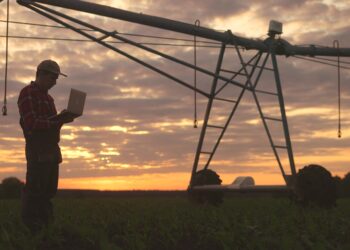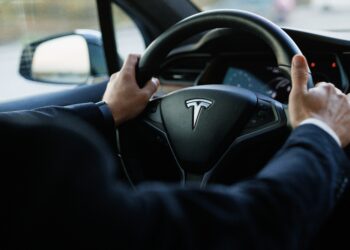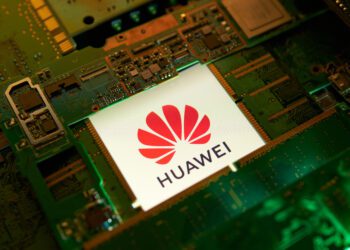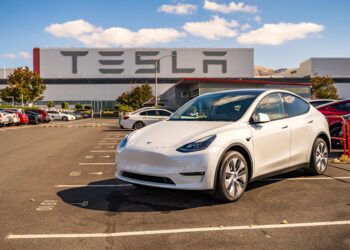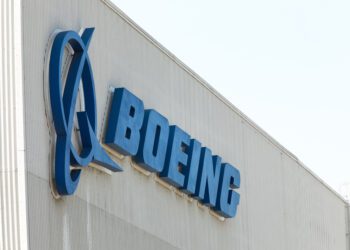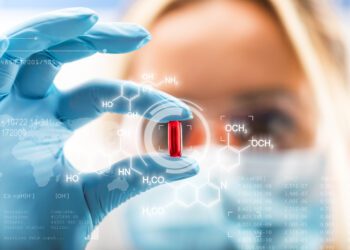The SpaceX launch is a landmark moment for both US and international space travel.
As long as humans have been flying to space, the government has been in charge of getting them there, but as astronauts Bob Behnken and Doug Hurley are launched into orbit, a new era for public-private partnerships in space travel dawns: NASA is now looking to profit-making opportunities in space to transition from launch operator to customer. Picture that.
At 3:22pm on Saturday, May 30, SpaceX’s Falcon 9 launched Crew Dragon’s second demonstration (Demo-2) mission from NASA’s Kennedy Space Center in Florida. The next day, the capsule docked to the International Space Station (ISS). The test flight, with NASA astronauts Bob Behnken and Doug Hurley on board, returned human spaceflight to the United States for the first time in nine years.
Demo-2 is the final major test for SpaceX’s human spaceflight system to be certified by NASA for operational crew missions to and from the ISS. In the eyes of many, NASA’s Commercial Crew Program is a turning point for America’s future in space exploration that lays the groundwork for future missions to the Moon, Mars, and beyond.
Eighteen hours after takeoff, the Dragon capsule attached to the bow section of the ISS which hangs in orbit 422km above China through a fully automated process. The doors between the Dragon and the ISS opened at 12:02pm EST. When Hurley and Behnken floated through, they were met by ISS Commander and fellow NASA astronaut Chris Cassidy, and Russian cosmonauts Anatoly Ivanishin and Ivan Vagner.
“We’re just happy to be here and Chris is going to put us to work,” said Doug Hurley in a radio link with mission control in Houston, Texas. “And hopefully we will fit in and not mess too many things up.” Bob Behnken said that the two astronauts probably slept some seven hours during the voyage, adding, “The first night is always a little bit of a challenge, but the Dragon was a slick vehicle, and we had good air flow and so we had an excellent evening.”
Hurley and Behnken’s job on the mission is to test all onboard systems and to give their feedback to engineers. They will stay on the ISS for around four months where they will take part in the station’s everyday science and maintenance activities.
A new era for space travel
As Bob Behnken and Doug Hurley are launched, a new era for public-private partnerships in space travel dawns.
Beyond the impressive technological feats involved, the mission marks the beginning of a new era in which NASA will purchase transport services from the commercial sector—in this case, Elon Musk’s SpaceX, based in Hawthorne, California—for the first time. SpaceX also provided the Falcon rocket that carried the Crew Dragon.
SpaceX and NASA need a clean crewed demonstration so they can move swiftly to the next phase of the company’s $2.6bn contract, which will encompass six astronaut “taxi” flights, with the first of these likely to occur at the end of August this year.
NASA had been planning to hand over the transport of crew to the International Space Station (ISS) since the early 2000s. After the Columbia space shuttle broke up during its return to Earth in 2003, the agency focused on developing a replacement spaceship that could travel to the Moon. Involving private firms in the transfer of crew and cargo to the ISS thus became a necessary step.
In 2014, entrepreneur Elon Musk’s company SpaceX and aerospace giant Boeing were announced as winners of a NASA contract for crew transport services. Founded by Musk in 2002 with a view to reducing space transportation costs and enabling the colonization of Mars, SpaceX now provides commercial and government launch services on its Falcon 9 and Falcon Heavy rockets.
“I’m really quite overcome with emotion on this day, so it’s kind of hard to talk, frankly. It’s been 18 years working towards this goal, so it’s hard to believe that it’s happened,” Elon Musk has said this time at a post-launch press conference. “I think this is something that’s particularly important in the United States but appeals to everyone throughout the world who has within them the spirit of exploration,” Musk continued. “This is something that I think humanity should be excited about proud of occurring on this day.”
SpaceX was the first private company to routinely return rocket stages to Earth under propulsive power so they could be re-flown rather than being discarded. It has been conducting regular flights of cargo to the ISS with the May 30 launch of the Crew Dragon its first manned spaceflight. Musk is also developing a larger craft—the Starship—to carry humans with the idea of eventually settling Mars. If all goes well with the Demo-2 test flight, Space.com reports, SpaceX will soon begin launching astronauts to the International Space Station (ISS) for NASA as well as other space agencies and private companies. The first operational Crew Dragon mission, called Crew-1, could launch to the ISS as early as Aug. 30, with three NASA astronauts and one astronaut from the Japanese Aerospace Exploration Agency on board.
As a reward for their historic voyage, Hurley and Behnken will now claim a U.S. flag left on the platform by the members of the last space shuttle mission in 2011. The Atlantis orbiter’s crew left it there as inspiration to all those astronauts that followed. The flag, which also flew on the very first shuttle flight in 1981, will then be returned to Earth and passed on to the next mission to travel beyond Earth’s orbit.


